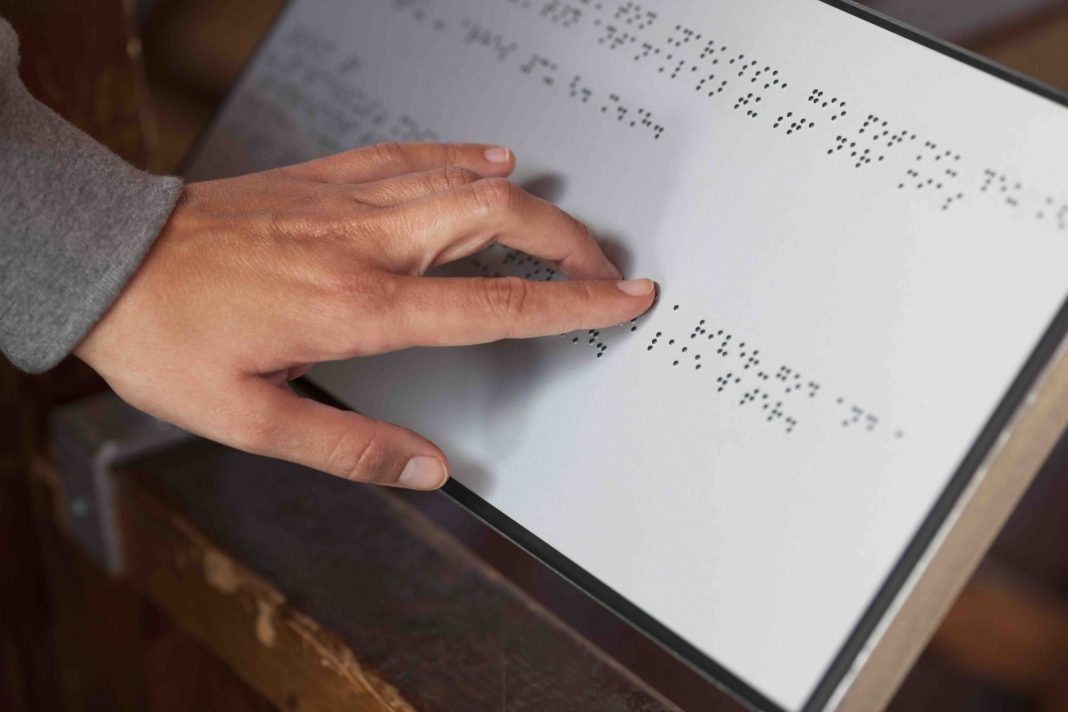As part of this year’s Melbourne Knowledge Week, researchers from Monash University will “bomb” signage across Melbourne with stickers containing braille to highlight the importance of accessibility.
“Through braille bombing, we are trying to invite people to experience a different world and learn, in a very tangible way, about what it means for our shared urban spaces to be more accessible,” Inclusive Technologies researcher and braille codes expert Leona Holloway said.
Following this, on Wednesday 11 May, experts from the Faculty of Information Technology’s (IT) Inclusive Technologies Research Group will take members of the public through the streets of Melbourne for the Braille Bombing Tour.
In the free public session, led by Ms Holloway, participants will learn the braille alphabet, create braille labels and then stick them on signs.
The goal is to not only send a positive message about accessibility and inclusion but assist visitors who are blind or have low vision.
“As inclusive technology researchers, we are exploring how emerging technologies like 3D printing, low-cost electronics, refreshable tactile displays, artificial intelligence, machine learning and computer vision can be used to support the lives of people living with a disability while empowering them, and their families and communities with shared knowledge.”
The Braille Bombing Tour is being presented in partnership with the Australian Braille Authority (ABA), which oversees the development of braille codes and promotes braille as the primary literacy medium for people who are blind or have low vision.
ABA Executive Member and braille proofreader Tristan Clare said braille labelling is just as important as printed signs, as it offers information about floors in an elevator, provides essential fire safety information and prevents the embarrassment of walking into the wrong toilet.
“Also, if a learner is exposed to braille labelling around their home, school or place of work they are getting some of the incidental reading that sighted people have access to,” she said.
“Braille readers don’t have anywhere near as much access to the written word as sighted people do. Braille labelling could go some way to redressing that balance.
“Braille Bombing is a fun way to promote community awareness of the importance of braille labelling. It would be great if organisations in other cities could also take up the Braille Bombing challenge.”
The Braille Bombing Tour forms part of the Inclusive Technologies Research Group’s Accessible Melbourne installation on 11 May.
Visitors can explore the Inclusive Technologies research through five interactive activities:
- Tactile Melbourne: Visitors will try to identify a range of 3D printed map icons using only their sense of touch and see them displayed on a tactile map of the Carlton Gardens.
- Annotated Melbourne: In this activity, visitors can explore options for accessing audio labels on physical objects.
- Interactive Melbourne: People can explore an interactive 3D model of the Royal Botanic Gardens, designed for use with a conversational agent so that users can ask the model questions which it will answer by voice.
- Sonified Melbourne: Visitors will see how the Inclusive Technologies team is helping make infographics more accessible through InfoSonics: an innovative combination of speech labels, audio data and audio samples.
- Brailling Melbourne: This takeaway activity will provide people with a motivational quote written in braille on labels, which they can then post in their local community.
To register for the Braille Bombing Tour, please visit: https://tinyurl.com/yvnxxe5a







